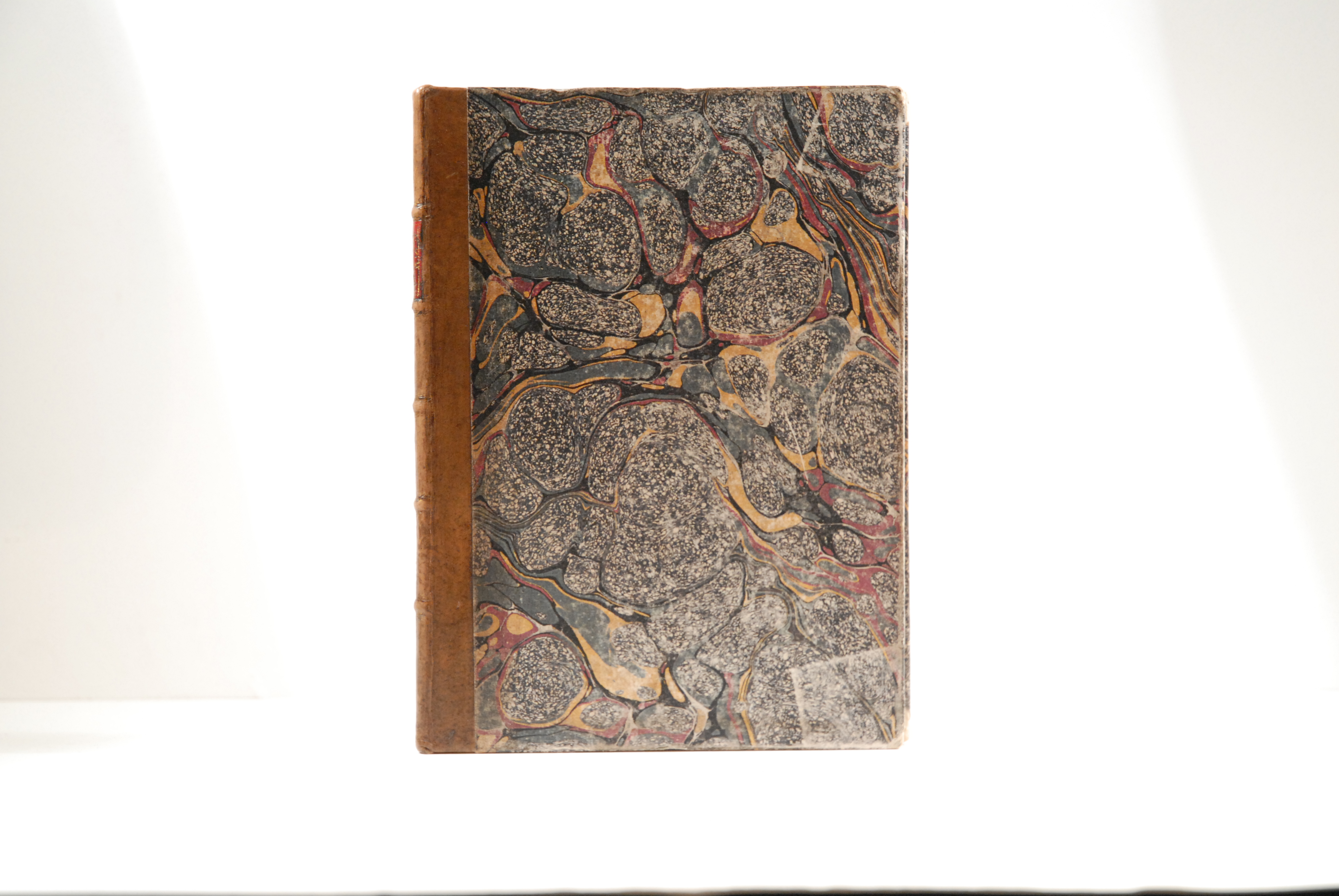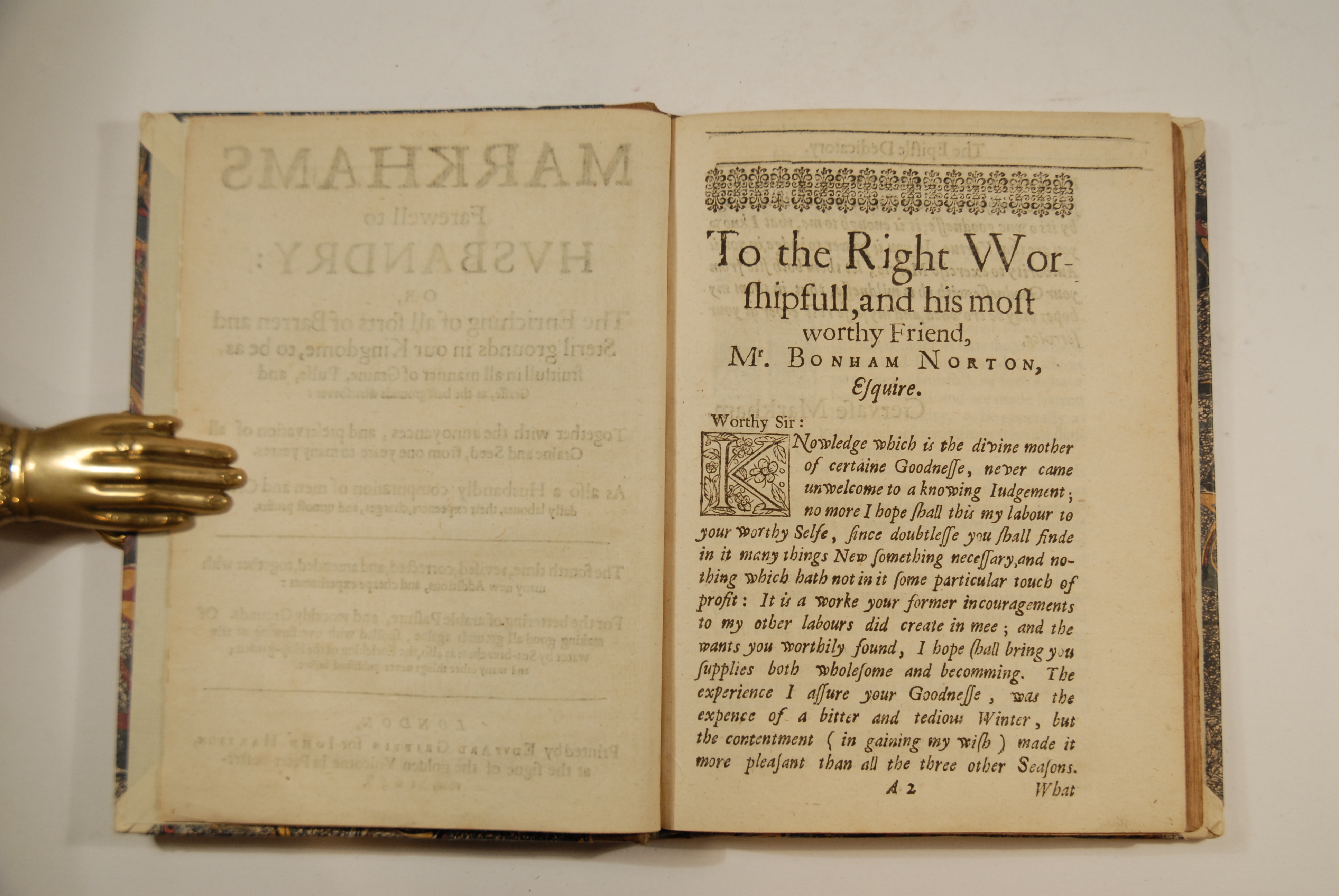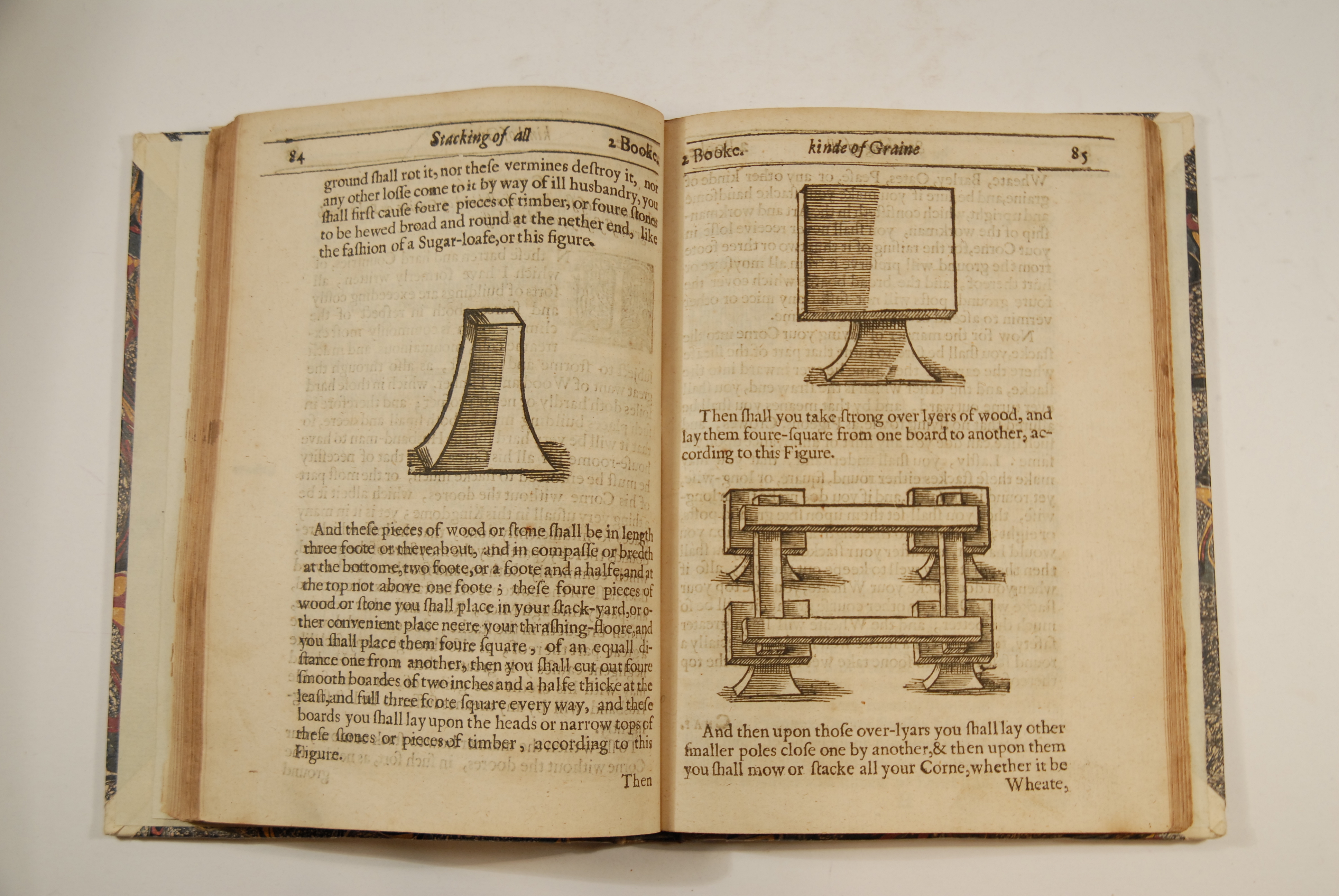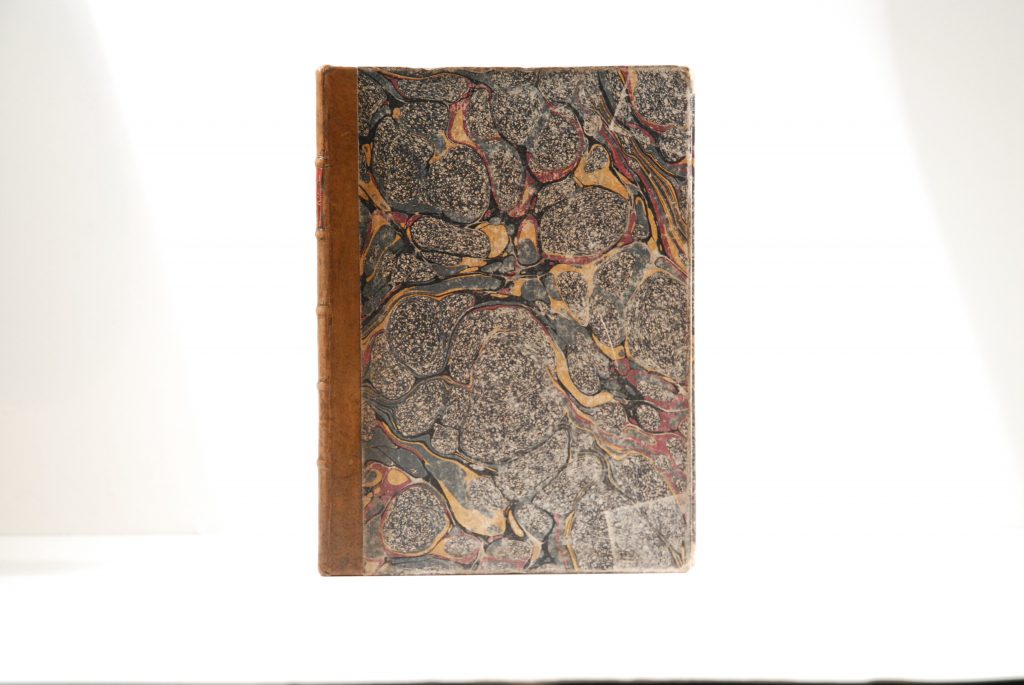MARKHAM, Gervase
Markhams farewell to husbandry: or, the enriching of all sorts of barren and steril grounds in our kingdome,.
London, Printed by Edvvard Griffin for Iohn Harison, 1638£1,750.00
4to. pp. [xii], 32, 23-158. A B-L M . Roman letter, some Italic. Woodcut floriated initials, woodcut and typographical headpieces, numerous small woodcuts in the text of early farming tools and implements. Light age yellowing the rare marginal spot or mark. A very good copy in modern quarter calf over marbled boards, spine with gilt ruled raised bands red morocco label gilt lettered.
Fourth edition ‘revised, corrected, and amended, together with many new additions,’ of this important and innovative agricultural work by Markham, on the preparation and improvement of soils and on arable farming generally. “Soil husbandry began to be seen as the key to productive, profitable farming. Gervase Markham, one of the first agricultural writers to write in English instead of Latin, described soils as various mixtures of clay, sand, and gravel. What made good soil depended on the local climate, the character and condition of the soil, and the local plants (crops). “Simple Clays, Sands, or Gravels together; may be all good, and all fit to bring forth increase, or all … barren.” Understanding the soil was the key to understanding what would grow best, and essential to keeping a farm productive. “Thus having a true knowledge of the Nature and Condition of your ground…. it may not only be purged and clensed … but also so much bettered and refined.” Prescribing steps to improve British farms, Markham recommended using the right type of plow for the ground. He advised mixing river sand and crushed burned limestone into the soil, to be followed by the best manure to be had, preferably ox, cow, or horse dung. In describing procedures for improving barren soils, Markham advocated growing wheat or rye for two years in a field, and then letting sheep graze and manure it for a year. After the sheep, several crops of barley were to be followed in the seventh year by peas or beans, and then several more years as pasture. After this cycle the ground would be much improved for growing grain. The key to sustaining soil fertility was to alternate livestock and crops on the same piece of ground. Equally important, although it received less attention, was preventing erosion of the soil itself. Markham advised plowing carefully to avoid collecting water into erosive gullies. Good soil was the key to a good farm, and keeping soil on the farm required special effort even on England’s gentle rolling hills.” David R. Montgomery. “Dirt. The Erosion of Civilizations” The work also deals with the preservation of grains and pulses, including a section on the best grain to take to sea (which he concludes is rice). It also contains two chapters at the end on the husbandry of cattle for plowing.
“Many books on agriculture and gardening were published during the century, but from the historical point of view the most important are those of Markham, because they appeared at an early stage in the new development, were widely read, and full of useful information and sound advice. Markham was a too prolific writer, but one can forgive his constant repetition and shameless re-issuing of unsold books under a new title for the great influence his writings had on English agriculture. His most important work was ‘Markhams farewell to husbandry.’ It dealt fully and expertly not only with ploughing, sowing and harvesting, but with methods such as sanding, lining, marling and manuring, by which fertility of land could be increased.” Anne Wilbraham ‘The Englishman’s Food: Five Centuries of English Diet’.
STC 17375. ESTC S102615. Poynter. P. 132 No. 24 (1620 edn.)In stock








